War Between Armenia and Azerbaijan Threatens to Drag in Bigger Participants
The outbreak of hostilities between Armenia and Azerbaijan on the 27 September is not completely surprising; both countries have fought several short and brutal campaigns against one another since the collapse of the Soviet Union.
However, this surge of violence looks ominously like not burning out, as has previously occurred when the two sides engaged in hostilities. Instead the conflict looks to become the next area of competition between Russia and Turkey, who have already locked horns in Syria and Libya.
Background
Relations between the Armenians and Azeris have long been bloody. Both countries briefly achieved independence in 1918 after World War One and rapidly ended up fighting each over territory which both saw as historically and ethnically theirs.
This fighting rolled onto 1920, when both countries were annexed by the Soviet Union. This damped down hostilities, but even under the iron control of the Soviets occasional episodes did occur. In 1988 Armenians in the Nagorno-Karabakh enclave voted to leave Azerbaijan and join with Armenia. As the situation deteriorated tensions increased between Armenians and Azeri’s in the region, leading to pogroms and ultimately full scale conflict by 1992; the Nagorno-Karabakh War.
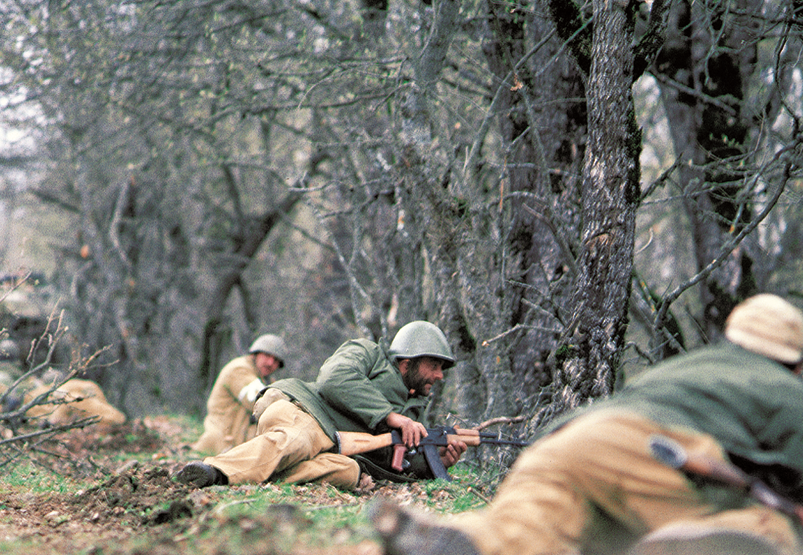
When the fighting ended in 1994 Armenia had taken substantial tracts of what had been Azerbaijan territory; not just the contested Nagorno-Karabakh enclave, but several surrounding regions. The costs had been heavy though for both countries; an estimated 6,000 Armenians and perhaps as many as 25,000 Azeri’s died.
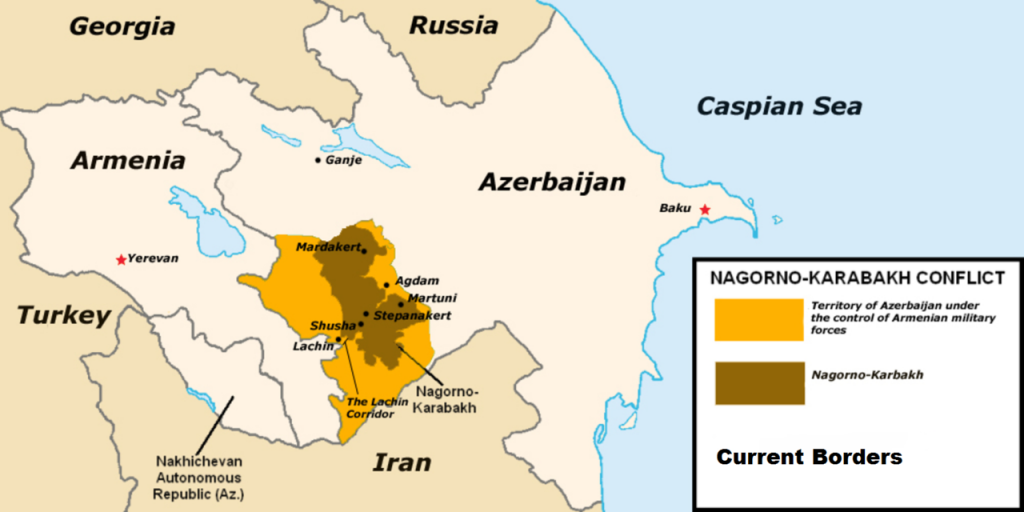
Negotiations with international mediators have continued since then. However, the reality on the ground was that ethnic Armenians now controlled the land that the international community considered legally to be Azerbaijan. This area officially became the internationally-unrecognised Republic of Artsakh, though in reality this is effectively part of Armenia.
Fighting has periodically occurred since then, including a four-day conflict in 2016 and fighting in July this year.
Small Arms
The Armenians and the Azeris are similar in the equipment they use, much of it legacy weaponry from the Soviet period. Though some other articles have come into their respective inventories the infantry still rely on their redoubtable Kalashnikov rifles as the standard weapon for both sides. Both 7.62x39mm AKM and 5.45x39mm AK-74M pattern rifles are in use.
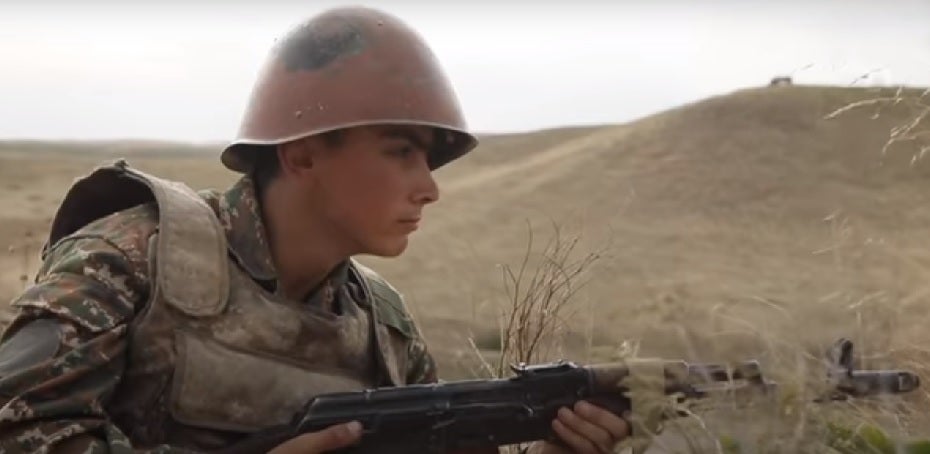
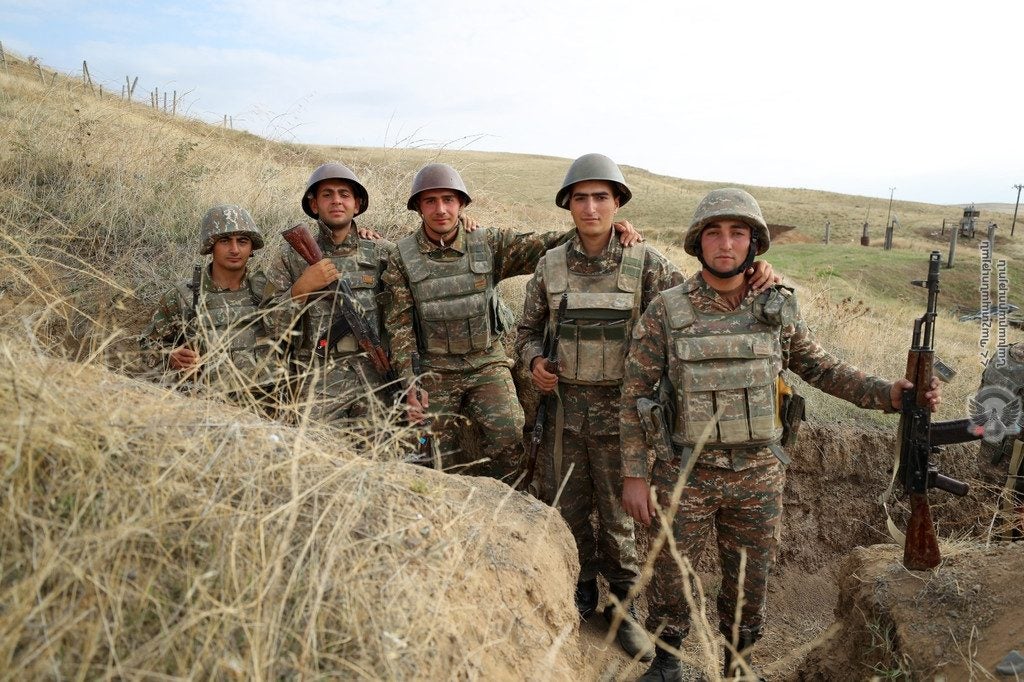
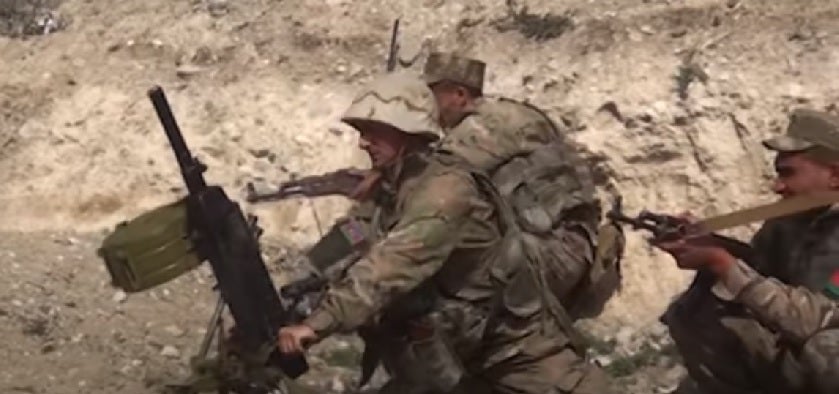
In the following clip Armenian soldiers in a defensive position engage an Azeri drone with AK-74s. Also seen are 9K111 anti-tank missiles.
Current Situation
Both sides have accused the other of starting the current fighting, but the Azeri’s have taken the offensive and appear to be trying to take areas with important strategic and tactical value. Azerbaijan crossed the Line Of Contact (LOC), the de facto border with tanks, armoured infantry and heavy artillery support. They have also made very effective use of Unmanned Aerial Vehicles (UAVs), something they had invested heavily in before the start of the conflict.
Armenia declared martial law and a full mobilization within hours of the fighting starting. Azerbaijan followed with a similar move the next day, an indication that fighting this time was likely to be more
widespread than the previous skirmishes.
The fighting has been fierce and both sides have been lavish in publishing footage online of their successes against their opponents.
Azeri tanks being engaged by Armenian forces:
Azeri infantry and vehicles coming under attack:
Armenian forces claimed to have shot down multiple Azeri aircraft, this footage thought to show the remains of an Azeri AN-2 transport:
Retreating Azeri infantry being engaged (warning: graphic):
The Azeri’s have been utilising considerable artillery support, including the fearsome TOS-1 thermobaric rocket launcher:
Azeri drones have proven extremely effective in attacking Armenian forces, including Russian-built air defence weapons and radars:
Azeri infantry look to have plenty of fire support available:
With both sides desperate to win the propaganda war (with the Armenian Ministry of Defense even having a toll-free number for interested parties to call), each has been equally quick to release their estimations of the other’s casualties whilst denying the claims of their rival. These are certainly inflated, with the Azeri’s claiming up to 2,300 Armenian soldiers killed on 30 September.
In truth, the consensus amongst neutral observers is that both sides claims be taken with a large grain of salt. As a result confirmed losses are almost impossible to determine, but it is likely several hundred dead at the time of publishing. Additionally, allegations of attacks on civilian targets on both sides are increasingly common.
A New Proxy War
Although the war is currently bad enough, it is looking increasingly that the conflict is not just garnering the attention of the bigger regional powers, but possibly being fuelled by them.
The Turkish President, Tayyip Erdogan, has been bellicose from the start of the conflict in support Azerbaijan. At a public event on 28 September in Istanbul he stated that Armenia must immediately withdraw from territory it was occupying in Azerbaijan. Turkey, a close ally of Azerbaijan, has been accused of sending fighters from Syria to assist the Azeri’s, as it has previously in Libya. This was denied by the Azerbaijan government.
What is plain is the rhetoric coming from Ankara. Along with President Erdogan, members of the Turkish government have been strong in their support for Azerbaijan, with Turkish Defense Minister Hulusi Akar going as far to say that: “We are with our Azerbaijani brothers, who are fighting for their territorial integrity, to the end with all the means we have.”
Of note are widespread stories in the Turkish press that the Kurdish PKK – who have been embroiled in a bitter civil conflict in Turkey since the 1980s – are fighting alongside the Armenian army. Though a frankly ludicrous claim, this accusation has been used before by the Turkish government to justify intervention in neighbouring countries.
For Armenians, the prospect of Turkish invasion is one that evokes old memories. The Armenian Genocide, which saw perhaps as many as 1.5 million Armenians killed by the Ottoman Empire, is still very much remembered by the current generation.
On 29 September the Armenians accused Turkey of taking an active role in the conflict, stating that one of their SU-25 attack jets had been shot down by a Turkish F-16. In a war marked with constant accusations and denials, this claim was refuted. However, as the day previously the Armenians had warned that use of F-16s against them would lead to them possibly using their 9K720 Iskander short-range ballistic missile systems in response, the accusation from the Armenians may have been a sign of their increasing desperation.
Another key factor is which way Russia moves. With close ties to Azerbaijan and a military alliance with Armenia – including having a large base in the country – Moscow has been reticent to get involved. In public statements the Kremlin has called on Turkey to assist efforts to achieve a ceasefire, but other than an overflight by Russian Air Force jets over the Armenian capital has not made any official commitment to either side.
Russia, along with France, have called for a ceasefire an negotiation with both Vladimir Putin and Emmanuel Macron appealing to the governments of Armenia and Azerbaijan. So far the two countries have rejected the international calls for dialogue.
But with Russia also trying to maintain its position abroad it is possible that Putin may need to take action if the Armenians falter or the Turks start to play an open role; losing its foothold in the southern Caucasus would be a serious blow to Russia’s prestige and a further reinforcement for Turkey’s aggressive foreign policy.
Unfortunately, the brutal truth is that whilst the politicians manoeuvre and talk, it is the soldiers that are the ones paying the price.
